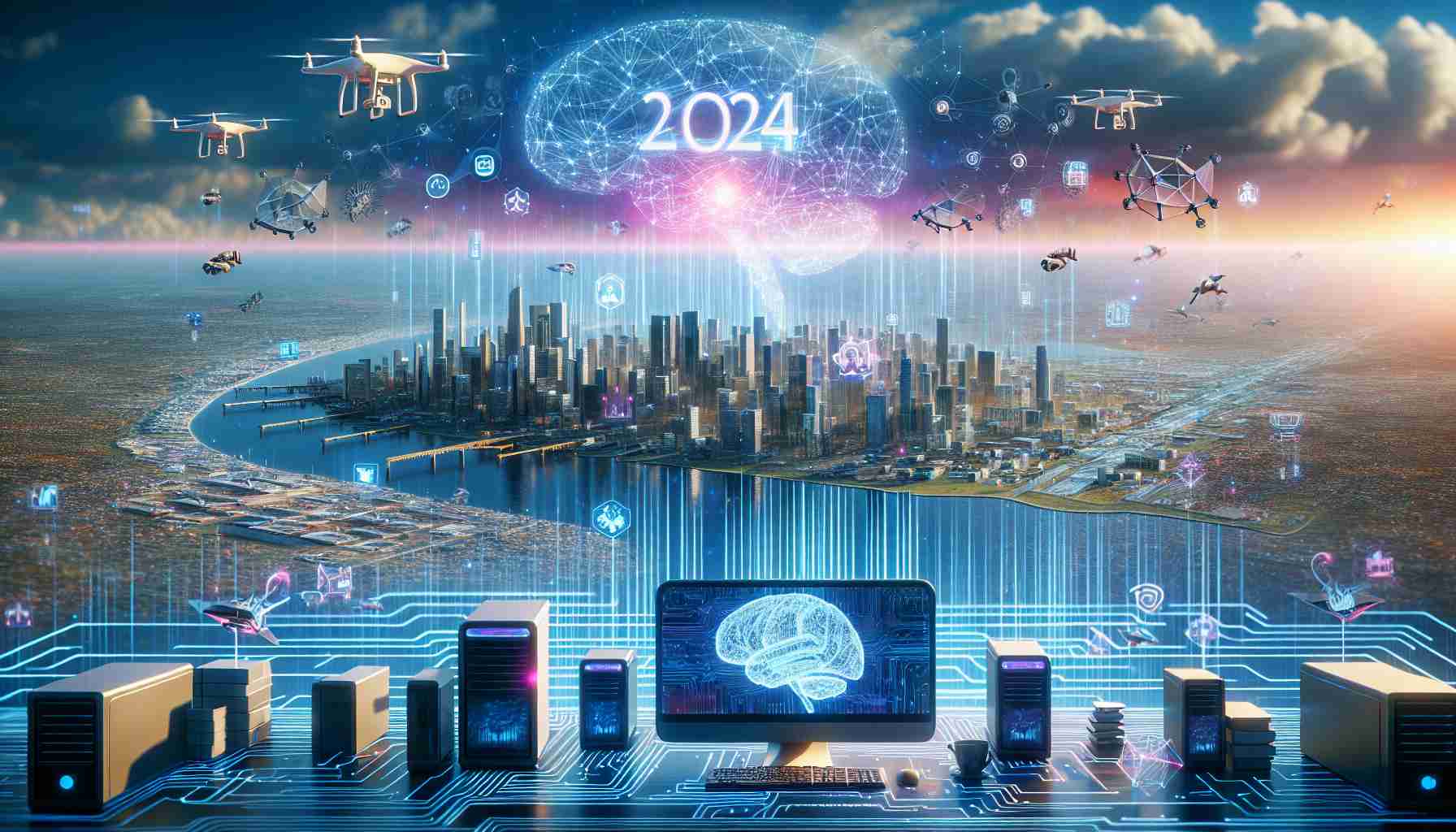- Global job market experiences a 1.4% growth driven by AI and cloud computing.
- Retail, tech, and communications sectors lead job growth, with notable hiring by Amazon, Walgreens, Accenture, Reliance Jio, and Microsoft.
- Demand for AI/ML Engineers, Cloud Architects, and Generative AI Solution Architects surges.
- Generative AI technologies like ChatGPT and Copilot gain popularity, boosting job opportunities.
- India emerges as the leader in job growth, with a strategic hiring shift by U.S. companies from China to India.
- Countries such as China, Brazil, and Australia also see increased job activity.
- Infrastructure-as-a-Service growth raises demand for professionals in Cloud Infrastructure, Security, and Data Operations.
- This year marks a significant shift, influenced by AI, cloud technologies, and geopolitical strategies shaping future hiring trends.
A wave of transformation sweeps across the global job market, ignited by the relentless surge of artificial intelligence and cloud computing. Fueled by these technological currents, employment opportunities worldwide show a notable 1.4% growth this year.
Despite a backdrop of corporate restructurings and more than 500 firms announcing layoffs, resilience shines through. The sizzle of opportunity burns brightest in the retail sector, where giants like Amazon and Walgreens are leading the charge with a striking increase in job postings. Not far behind, the tech and communications arena, dominated by powerhouses such as Accenture, Reliance Jio, and Microsoft, witnesses a similar hiring swell.
Emerging as key figures in this evolving landscape are AI/ML Engineers, Cloud Architects, and Generative AI Solution Architects. These roles, once niches, now stand at the forefront of recruitment. Fascination with technologies like ChatGPT and Copilot underscores a rising trend in Generative AI expertise.
India claims the spotlight as the leader in job opportunity growth, reflecting a strategic pivot by U.S. corporations to bolster hiring while easing their footprint in China. Beyond the Indian subcontinent, countries like China, Brazil, and Australia also enjoy increased job activity, offering a rich tableau of options for talent across continents.
The ascent of Infrastructure-as-a-Service complements this burgeoning scene, sparking heightened demand for professionals managing Cloud Infrastructure, Security, and Data Operations.
This year signals a profound inflection point. With AI and cloud technologies steering the wheel, organizations face both exhilarating opportunities and intricate challenges. The recalibration of hiring strategies, particularly the shift toward India and away from China, is not just an economic maneuver but a reflection of deeper geopolitical themes shaping our shared future.
The Untold Truth Behind the AI and Cloud-Driven Job Market Boom
Market Analysis and Trends
The global job market is undergoing a profound transformation, buoyed by advancements in artificial intelligence (AI) and cloud computing technology. While the source article highlights a 1.4% growth in employment opportunities, this figure only scratches the surface of the underlying trends shaping the future of work. Beyond the surge in job postings in retail and technology, there are other critical aspects to consider.
Pros and Cons of AI and Cloud Adoption
Pros:
1. Increased Efficiency: AI-driven processes and cloud computing drastically cut down processing times and can automate repetitive tasks, allowing businesses to focus on innovation.
2. Scalability: Businesses can scale operations more flexibly, adjusting resources as demand changes thanks to cloud solutions.
3. Global Reach: Organizations can tap into a global talent pool, leveraging AI for remote work capabilities.
Cons:
1. Job Displacement: Automation and AI can lead to job losses in certain sectors, particularly manual or repetitive tasks.
2. Security Risks: The more data moved to the cloud, the more companies must invest in robust cybersecurity measures to protect sensitive information.
3. Dependency on Technology: Over-reliance on AI and cloud infrastructure can create vulnerabilities if the technology fails or suffers downtime.
Key Roles and Skills in Demand
The focus is shifting toward roles such as AI/ML Engineers, Cloud Architects, and Generative AI Solution Architects. These positions require a deep understanding of machine learning models, cloud infrastructure, and AI-driven solutions. Skills in using tools like ChatGPT and Copilot are becoming increasingly valuable.
Market Forecasts and Predictions
As AI and cloud technologies continue to evolve, the demand for IT professionals versed in these areas is expected to grow significantly over the next decade. The global AI market size is projected to reach $733.7 billion by 2027, showcasing the fast-paced advancements and adoption rates.
Geopolitical Implications
The shift in hiring from China to India is not just a business decision but heavily influenced by geopolitical relations. With India offering a rich talent pool and a conducive environment for IT businesses, many Western corporations find it strategic to invest more in this region.
Sustainability and Innovations
In the quest for sustainability, cloud providers are aggressively pursuing renewable energy options to power their data centers. Innovations such as predictive analytics and AI-driven sustainability solutions help organizations maintain eco-friendly operations while minimizing their carbon footprint.
Important Questions Answered
Why is AI driving job growth globally?
AI is transforming industries by enhancing productivity and creating new roles that did not exist a decade ago. Businesses worldwide are adopting AI-driven solutions to stay competitive, leading to an increased demand for skilled professionals.
How can industries mitigate the risks associated with AI and cloud adoption?
Organizations can mitigate risks by adopting comprehensive cybersecurity measures, ensuring robust data encryption, and investing in employee training to adapt to new technologies.
What does the future hold for cloud computing?
Cloud computing is projected to grow as more businesses move away from on-premises solutions. Future innovations may include enhanced hybrid cloud solutions and edge computing, allowing data processing closer to the data source for faster decision-making.
Related Links
For further reading, you can explore more about this technology surge at:
Amazon
Walgreens
Accenture
Microsoft
Navigating this new job landscape requires adapting to these changing demands, understanding the shifting economic dynamics, and capitalizing on the technologies driving this transformation.













